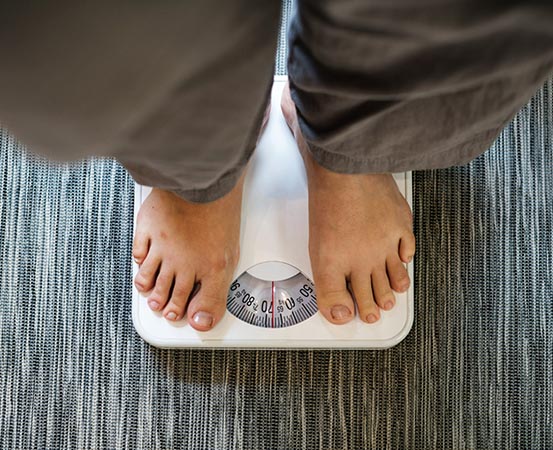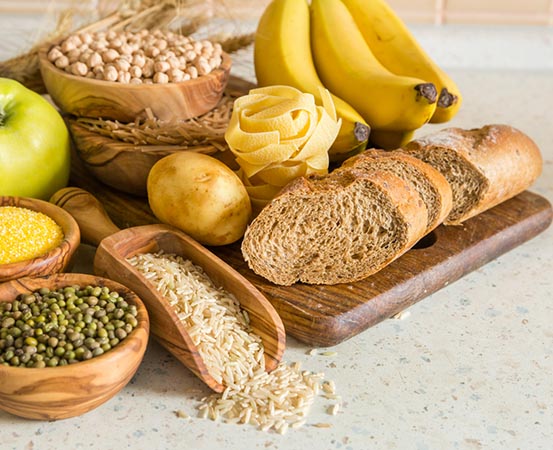Type 2 diabetes has emerged as a global lifestyle and metabolic disorder in recent years. It is also a precursor to multiple cardiovascular complications, including heart attacks and strokes.
The condition is triggered by severe insulin resistance that compromises the breakdown and absorption of glucose in the blood. Blood glucose (sugar) is vital for basic cellular functions including energy storage and disbursal. But hampered insulin activity leads to fluctuations in blood sugar levels that, if left unmonitored, could snowball into a major health risk.
Factors such as a sedentary lifestyle (little to no physical activity), unhealthy food habits, uncontrolled carbohydrate intake (particularly simple carbohydrates), obesity, high blood pressure and increased cholesterol levels are among the risk factors for diabetes.
Here are some sweet tricks to help maintain your blood sugar.
1. Exercise regularly

Exercise is an effective approach to control sugar levels. At least 150 minutes of moderate physical activity a week is recommended. Both resistance training and aerobic exercise help to lower insulin resistance. Getting up once in 30 minutes while sitting for long hours at work is suggested. Other activities like stretching, yoga or taking a walk are helpful in blood sugar control. Insulin sensitivity improves during exercise, which helps in better glycaemic control and thereby weight reduction. Dropping just seven percent of body weight can help to improve insulin sensitivity and promote healthy blood sugar levels
Also read: Working out with diabetes
2. Manage stress

Stress stimulates hormones that decrease insulin production and raise blood sugar levels. Thus, managing or avoiding stress can improve blood sugar levels. Adequate sleep at night is essential to control blood glucose. Lack of sleep can trigger insulin resistance leading to high sugar levels. Stress can be tackled through increased social interactions, taking proper medications, relaxation exercises, meditation, yoga and pranayama.
Also read: How yoga can help manage your diabetes
3. Lose weight

The bulk of excess abdominal fat is stored inside the abdominal cavity, especially in organs like liver and pancreas. These fat deposits disrupt the metabolic cycle, making people susceptible to a battery of metabolic, endocrinal and cardiovascular disorders, including diabetes. Experts, therefore, point to a bulging paunch as one of the sure-shot external signs of consistent spike in blood glucose levels and a serious warning for the onset of full-blown type 2 diabetes.
“Fat that is deposited in the liver and around the visceral organs has more adverse effects on the metabolism of glucose and lipids,” says Dr Alka Kanaya, professor of medicine and principal investigator of the Mediators of Atherosclerosis in South Asians Living in America (MASALA) cohort study group, University of California San Francisco. “In the MASALA (Mediators of Atherosclerosis in South Asians Living in America) study, we have shown how having more fat in the liver and around the visceral organs is strongly associated with worsening glucose tolerance and type 2 diabetes development over time.”
Also read:
How sleep deprivation, diabetes and obesity are linked
Diabetes sucker paunch and its knockout effect
4. Say no to carbohydrate and sugar intake

Refined, highly processed carbohydrate foods with added sugar — soft drinks, refined grains like bread, pasta, sugary cereals, pastries, etc — increase blood sugar levels.
On the other hand, complex carbohydrates take longer to break down and provide energy. The inclusion of complex carbohydrate sources like vegetables and whole grains in the diet lowers blood sugar levels. A healthy diet is a mix of carbohydrate and protein or tofu. A fair amount of protein, preferably from animal sources such as paneer, eggs, fish and meat, served along with whole grains help in lowering blood sugar levels.
Also read: A vegan diabetic weight-loss plan
5. Add fats to your diet

Eating the right fat plays an important role in maintaining blood sugar levels. Saturated fats like ghee and butter, which are considered to be good fat (in moderation), do not contain any sugar or carbohydrate and work well in controlling blood sugars. Fibre slows the absorption of sugar and carbohydrates, prevents spikes in blood sugars and improves gut health. Including high-fibre foods like vegetables helps in maintaining normal blood sugar levels.
Also read:
Best and worst foods for diabetics
Say cheese! And keep sugar in check
6. Fiber is your friend

Fiber helps in absorption of sugar and carbohydrates, prevents sudden fluctuations in blood sugar levels and improves gut health. Gut bacteria produce short-chain fatty acids (SCFA) which act as the main source of energy for the cells in the colon. They also regulate appetite and inflammation. The deficiency of SCFAs is associated with type 2 diabetes. A study found that adopting a high-fiber diet leads to increased growth of bacteria that produce SFCAs, which changes the gut microbe composition linked to high levels of glucagon-like peptide-1 (an intestinal hormone that affects the regulation of glycemia), blood sugar and better regulation of blood glucose.
Also read: Forbidden fruit? There’s a way out for diabetics
7. Gut composition

Changes in gut microbiome lead to metabolic disorders such as obesity, diabetes and insulin resistance. These conditions are influenced by the inability to maintain proper sugar levels in the blood. A cross-sectional study of 2,166 participants demonstrated that a greater diversity of microbiome in the gut is associated with less insulin resistance. People with type-2 diabetes had a less diverse gut composition than those without. Including prebiotic and probiotic foods like curd, kimchi and kombucha lowers blood sugar levels.
8. Monitor blood glucose

Blood glucose levels can range from low to dangerous in those with diabetes. Therefore, constantly testing and monitoring the levels, especially after a meal or exercise, is an important aspect of everyday life. Self-monitoring devices are portable and can be carried around while traveling, making it easier to keep a track of one’s readings. The two common types of self-monitoring devices in glucose checking are the basic blood glucose meter and the continuous glucose monitor.
Tracking blood glucose levels gives diabetics the power to control their glucose levels, thereby helping prevent or delay diabetes-related complications such as kidney disease, heart attack, stroke or even blindness.
Also read: Keeping track of diabetes at home

















